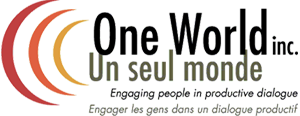Are Your Events Meeting Your Goals? 3 Steps to Successful Facilitation
 The steps of process design are part of the facilitation that doesn’t always get as much attention. A well designed process is the cornerstone of a successful facilitation and the primary reason an event achieves desired outcomes and gets the results both you and your client are looking for. Crafting an effective process design that works for the client can be challenging and often requires creativity, commitment and a strong focus.
The steps of process design are part of the facilitation that doesn’t always get as much attention. A well designed process is the cornerstone of a successful facilitation and the primary reason an event achieves desired outcomes and gets the results both you and your client are looking for. Crafting an effective process design that works for the client can be challenging and often requires creativity, commitment and a strong focus.
Step 1: Discovery
Engage With the Client
The first step in process design is also the most important. Discovery, or that period of time in the beginning phases where you engage with the client is critical for guiding the remainder of the facilitation. Discovery is where you define the issues, identify potential challenges and outline the intended outcomes of the event. Think of it as an internal diagnosis or needs assessment that must take place before the facilitation has direction. It is a roadmap of sorts that helps guide action. Discovery is a critical phase in process design and the only time you have to outline all of the unknowns. It’s essential that you are thorough and specific to ensure the facilitation achieves intended outcomes.
Step 2: Development
Level the Playing Field
The development phase is the “meat and potatoes” of the design process, where you transition from needs assessment to the actual process or “script”. Working closely with the client ensures everyone involved is on board. The development phase involves coaching stakeholders and presenters in crafting meaningful dialogue so that they can more effectively communicate to their audience what the issues are.
In most cases, you’ll work with presenters, outlining ideas and making sure talking points, core questions, power point presentations and other materials are well designed and support intended outcomes. Essentially, the development phase gives you the opportunity to be certain all supporting materials are accessible and stakeholders are ready with meaningful dialogue.
Step 3: Editing
Refining the “Script”
The final phase of process design is the time to edit and refine the facilitation “script”. This is the last chance you have to make sure everyone involved is prepped. Depending on the event, it may take two or three days to finalize plans. Complex events may require input from several sources, with the script going back and forth multiple times until everyone is satisfied. Transparency is a primary goal during this phase and it’s important that clients have input and understand exactly how the facilitation will move forward. Once the script is finalized, the event proceeds. After it is complete, feedback is collected for analysis and evaluation to help determine whether or not expected outcomes were achieved.
Designing a successful facilitation is a deliberative process involving a variety of people, ideas, and conversations. Engaging with the client to conduct an informal needs assessment or discovery helps create a facilitation “roadmap” which guides action. Working closely with stakeholders during development helps create meaningful dialogue. Finally, after receiving input from stakeholders on the script, the facilitation moves forward and feedback can be collected.
